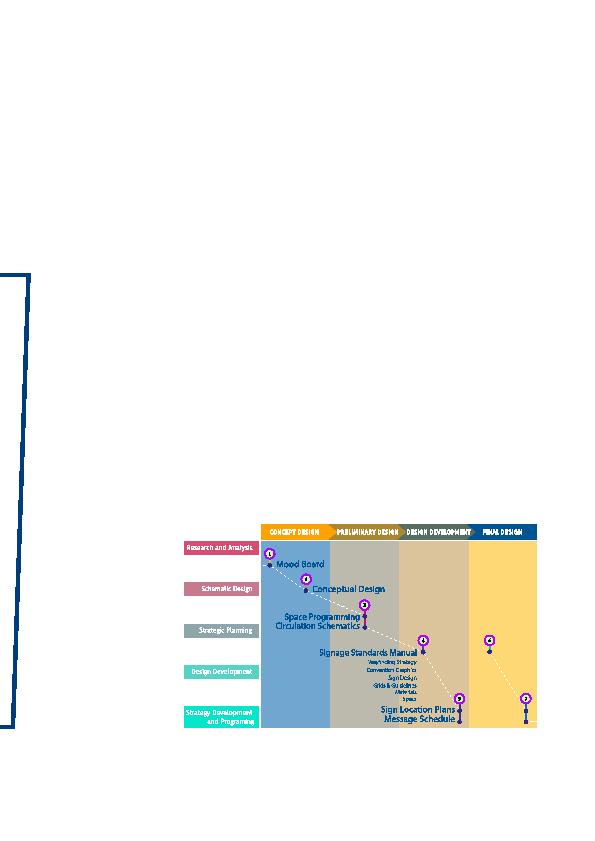
city planners for years. Modern wayfinding was ushered in by
two pioneers. Urban planner and theorist Kevin A. Lynch was
the first to call the process "wayfinding" and explore it at length
in his 1960 book The Image of the City. Then, environmental
psychologist Romedi Passini published Wayfinding in Architecture
and expanded the concept to include signage and other
graphical communication, tactile elements and provisions
for special needs.
find their way in an environment. Nevertheless, designers today
have evolved the practice. Today, they integrate wayfinding
with architecture and interior design to reach self-explanatory
structures, and to create a sense of place. All of the environment
shows the way.
much to do with architecture, interiors, transportation, and safety,
and - when integrated in early stages of a project - its advantages
can be maximized. At Dar Al-Handasah, the EGD unit creates
environments and wayfinding systems that give a sense
of security and facilitate movement and access.
to another. Dar's Environmental Graphic Design (EGD) unit provides a fascinating glimpse into the
professional world of wayfinding design.
is, therefore, a new challenge. The application is different in each
case: offices, hospitals, museums, conference and meeting halls,
hotels, airports, and universities. Designers have to consider
traffic, circulation and the division of space, as well as study
user behavior.
hallways and on routes through a strategic use of signage, color,
material, and structure that a person will experience first-hand.
It conducts studies and analyses in close collaboration with
architects, transportation specialists, landscapers, and electrical
engineers, in order to be sure that all constraints are taken
in consideration.
at the right time. New media wayfinding is dynamic: it directs
individuals and groups, detects users' data via Bluetooth,
RFID and wireless communication, and provides guidance
through smartphones. One thing is clear for the future:
wayfinding will continue to progress as a field, adapting
to new needs and technologies.